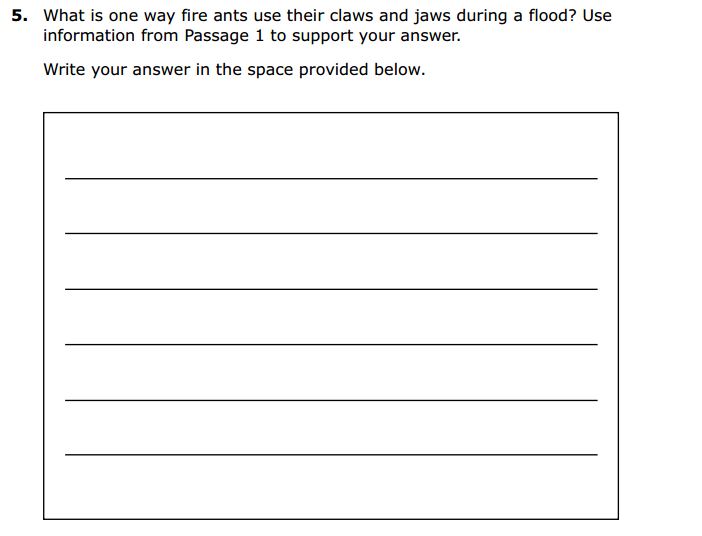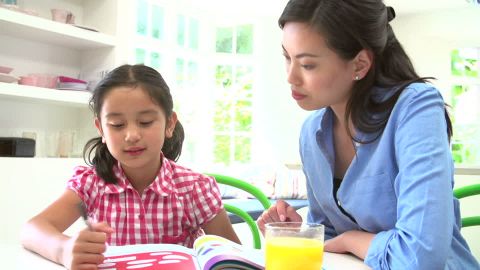FSA Practice Test Grade 3 ELA Reading: What to Expect
/In the state of Florida, third grade students are required to take the FSA ELA Reading Test. The test is designed to determine whether students have mastered grade level appropriate reading skills, and it is required for promotion to the fourth grade.
The best way to prepare for a test like FSA Reading is by completing practice questions and full length practice tests. That’s why we’ve provided an FSA Practice Test Grade 3 to help your child adequately prepare for this important assessment.
Download an FSA Reading Practice Test PDF for Grade 3 now by clicking the button below, and we will also send you our factsheet on the top 5 proven test prep strategies for using practice tests to effectively prepare.
In this article, we’ll also provide key information about the test, including the question types your child will encounter, how the test is scored, and additional strategies for success.
FSA ELA Grade 3 Basics
The 3rd grade FSA ELA test is administered in late March or early April. The test is currently paper based, but it will ultimately transition to the computer.
56-66 questions appear on the test,and students answer them in two separate 80-minute sessions.
Questions are based on reading passages, which may be literary or informational. The test will have at least one listening passage, which requires the use of headphones or earbuds.
Passages are intended to be interesting, engaging, and grade level appropriate. For third grade students, passages are between 100-700 words. They may include multimedia elements such as slideshows, charts, graphs, images, etc. Passages often appear in pairs.
What Skills Are Measured on the Grade 3 FSA Reading Test?
FSA Reading questions are aligned with Florida’s Language Arts standards for third grade. Like the state standards, question types are divided into four categories:
Let’s take a closer look at the skills measured by each question type.
Key Ideas and Details
For these questions, students will be asked to closely read a text in order to comprehend, analyze, and summarize key information. They will be asked to reference evidence from the text in order to support their inferences and conclusions.
Your child will need to be able to do the following:
For example, students may be asked to determine how a character’s actions impact events in the text, as in the example below.
FSA Grade 3 Reading Question: key ideas and details
In this example, notice that the question is composed of two parts. This is a common practice on the FSA Reading exam. Often, Part B will ask students to select a piece of evidence supporting the answer to Part A.
Craft and Structure
These questions measure a student’s ability to use context to interpret the meaning of words and phrases, determine how text structure and text features (like headings, subheadings, and images) impact meaning, and distinguish personal point of view from that of the narrator or author.
The following skills will be needed:
Students may be asked to provide evidence identifying the narrator, but they will not need to distinguish between first and third person.
Integration of Knowledge and Ideas
For this question type, students will be asked to integrate and analyze information that is presented in a variety of media formats, including how similar themes and topics are treated in diverse formats.
To accomplish this successfully, your child should be able to do the following:
FSA Reading Question Grade 3: Integration of Ideas and Knowledge
Language and Editing
Students are asked to demonstrate grade appropriate command of the English language by selecting the answer choice that correctly edits a provided sentence.This means your child will need to be able to evaluate and correct errors focusing on:
The extensive list of required skills may look overwhelming, but keep in mind that these are the skills students should have been working on in class throughout the school year.
Plus, providing plenty of practice opportunities for your student will help her feel prepared come test day. Remember that you can find many additional examples in your FSA Practice Test Grade 3.
Are All of the Questions Multiple Choice?
While most of the questions are multiple choice, there are a few question formats that may be unfamiliar to your child.
In addition, the Grade 3 exam also contains short answer questions, which students must answer in a brief written response. An example of a short answer prompt appears below.
FSA reading 3rd grade: Sample of a 'open response' question
As in the example above, students will typically be asked to provide evidence from the passage to support their response to the question. The provided answer space contains only six lines, so students are not expected to write a long-winded response.
At times, students will be asked to fill in the circle before a sentence that correctly answers the question, as seen below.
FSA READING 3rd Grade: SAMPLE OF "multiple choice-single response" QUESTION
You’ve probably noticed by now that the ability to provide evidence from the passage to support a claim is a key skill on this exam.
At other times, students may be asked to select two correct answers, like this.
FSA READING 3RD GRADE: SAMPLE OF "multiple choice-multiple answer" QUESTION
To avoid confusion on test day, it is important for your child to be familiar with the various question formats she may encounter. This is another reason answering practice questions and completing practice tests is so crucial.
How is the Grade 3 FSA Reading Test Scored?
On all FSA assessments, there are five possible achievement levels, and students receive a score ranging from 1 to 5. Each achievement level specifies how well students have mastered grade level appropriate skills as defined by Florida standards.
Below is an explanation of what each achievement level represents, in addition to the scaled score ranges that fit into each category.
Level 3 is considered passing, so students must score a 300 to pass the test.
Third grade students must earn a score of 2 or higher in order to be promoted to the fourth grade.
On your child’s score report, you will also receive information about the points earned and the points possible in each of the assessment’s four categories (Key Ideas and Details, Craft and Structure, Integration of Knowledge and Ideas, and Language and Editing).
This can give you a better idea of your child’s relative strengths and weaknesses, indicating what your child needs to continue working on in the future.
You will also be given the percentage of students in your child’s school, district, and grade who achieved each performance level. This allows you to see how your child compares to his or her peers.
How Can I Help My Child Succeed on the Grade 3 FSA Reading Test?
First of all, remind your child to pay attention in class throughout the year, asking questions as needed on homework and classwork. The Language Arts curriculum should follow the exact standards and skills that will be tested on the FSA.
One of the best ways to prepare for a reading test is by—of course—reading. In the months leading up to the test, have your child read a certain amount of pages or minutes weekly from a book that she enjoys.
Reading consistently will improve your child’s reading comprehension and enhance her vocabulary, two skills that are crucial to success on the exam.
Another extremely effective strategy is to practice, practice, practice. Have your child work on practice questions and complete at least 2-3 full length practice tests. Our FSA Practice Test Grade 3 is a great place to start.
However, simply answering the questions and then moving on will not yield much improvement. If your child misses a question, discuss why the correct answer is indeed correct. Come up with alternate approaches to this question type that may work better in the future.
Have your child explain her answer to each question. This gives you the opportunity to reinforce logical thinking and correct misconceptions as needed. Plus, it’s good practice for finding evidence to support a claim, perhaps the key skill on FSA Reading.
Teach your child general test-taking strategies such as the following:
Prior to the test, ensure that your child has a solid night of sleep and eats a nourishing breakfast.
For young children, avoiding test anxiety is very important, so be sure to avoid over-emphasizing the test or inadvertently causing your child to feel excessive stress or pressure.
If you follow the tips here and utilize the FSA Practice Test Grade 3, your child should be well on her way to a stress-free and successful performance on this important assessment.








